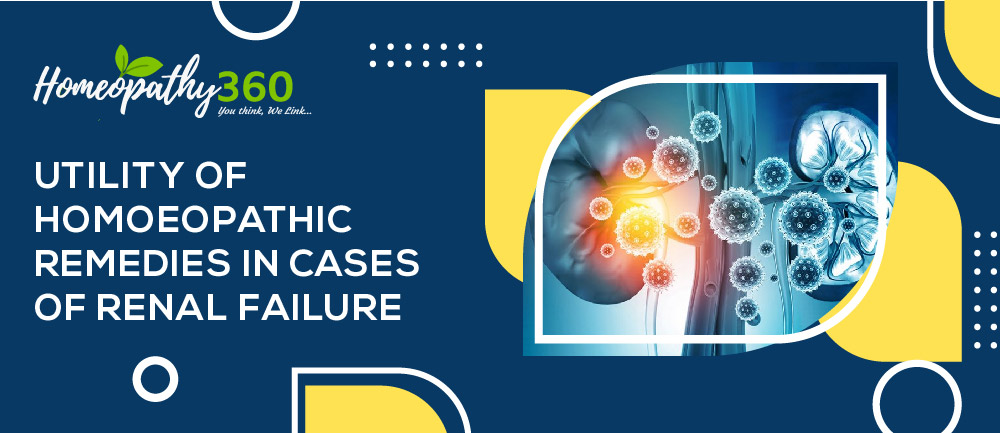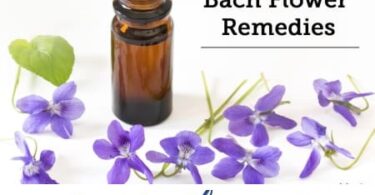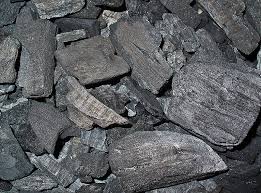
Kidney (Renal ) Failure: Symptoms, Causes, Tests and Treatment with homeopathy
Abstract:
Homoeopathy works without any known barrier whether in case of systemic disorder or in case of psychological, whether it is acute disease or chronic. Master Hahnemann invented this beautiful system of medicine in the year 1796 when the human race was fighting with a difficulty for their real cure and when there was scarcity of any known methodology of treatment. This article is about the pathological condition of renal failure and the homoeopathic aspect for the same.
Keywords: renal failure; homoeopathy.
Abbreviations: CRF: chronic renal failure, BUN: blood urea nitrogen, GFR: glomerular filtration rate, AGN: acute glomerulonephritis, ARF: acute renal failure, ANCA: anti-neutrophil cytoplasmic antibody, BVAS: Birmingham vasculitis activity score, RPGN: rapidly progressive glomerulonephritis.
Introduction:
Homoeopathy is not an organ specific medical system. It always works on the principal of similia similibus curenter and holistically, considering a whole set of interacting mental and general physical process of a human being. When one deals with acute diseases, there is no consideration of miasm but while dealing with the chronic disease like CRF, one must consider the miasmatic background too. Thus, homoeopathy in renal failure or kidney failure will act obviously when it follows the principle of homoeopathy.
Renal failure preliminary denote failure of the excretory function of the kidney, leading to retention of nitrogenous waste products of metabolism. At the same time, the renal function may fail, including the regulation of fluid and electrolyte status, as well as the endocrine function of the kidney1.
The term azotaemia is used for biochemical abnormality characterised by elevation of the blood urea nitrogen (BUN) and creatinine levels, by uraemia is defined as association of these biochemical abnormalities with clinical signs and symptoms.2
A renal failure can be of 2 types:
- Acute renal failure
- Chronic renal failure
These are classified as described below in the chart: 1, 2
| ACUTE RENAL FAILURE | CHRONIC RENAL FAIURE |
| It is characterised by sudden and reversible loss of renal function, which develops over a period of days or weeks.Here rapid onset of renal dysfunction, chiefly oliguria or anuria, and sudden increase in metabolic waste products (urea and creatinine) in the blood with consequent development of uraemia. (path)The causes of ARF may be classified as Pre-renal (inadequate cardiac output, hypovolaemia, cirrhosis of liver, renal artery stenosis, etc. ) ,Renal causes: AGN, vasculitis, tubule interstitial nephritis, acute tubular necrosis, and pyelonephritis. Post renal causes: it usually indicates obstructive uropathy below the urinary bladder like prostatic enlargement. The clinical features depend upon underlying causes of ARF and on the stages of the disease. The major patterns usually seen as Syndrome of acute nephritis– this type is mainly associated with acute post streptococcal glomerulonephritis and RPGN. The features are mild proteinuria, haematuria, oedema and mild hypertension.Syndrome accompanying tubular pathology— a) Oliguric phase: urinary output of < 400ml/day, this leads to retention of waste products of protein metabolism in blood which results in azotaemia, metabolic acidosis, hyperkalaemia, hypernatreamia and hypervolaemia. b) Diuretic phase – in this stage, the healing of the tubules occur with the improvement of urinary output. C) Phase of recovery – full recovery with healing of tubular epithelial cells occurs in about 50% cases, while others terminates in death.Pre-renal syndrome – typically this pattern is seen in marginal ischaemia caused by renal arterial obstruction, hypovolaemia, hypotension or cardiac insuffiency. Due to depressed renal flow, there is decrease in GFR causing oliguria, azotaemia and fluid retention and oedema. | It is a syndrome characterised by progressive and irreversible deterioration of renal function due to slow destruction of renal parenchyma, eventually terminating death when sufficient numbers of nephrons have been damaged. The major problem in CRF is acidosis, azotaemia and clinical uraemia syndrome.Regardless of cause CRF evolves progressively through 4 stages: Decrease renal reserve – here damage to the renal parenchyma is marginal, the GFR is about 50% of normal, BUN and creatinine values are normal and patients are usually symptomatic.Renal insufficiency – here about75% renal parenchyma has been destroyed; GFR is about 25% of normal, BUN and s. creatinine level elevated. Polyuria and nocturia are main feature along with sudden stress leads to uraemic syndrome.Renal failure – 90% renal tissues has been destroyed. The GFR is 10% of normal, tubular cells are become non-functional, which causes the oedema, metabolic acidosis, hypocalcaemia and sign and symptom of uraemia. End stage kidney –GFR is < 5% of normal and results in complex clinical picture of uremic syndrome with progressive primary (renal) and secondary (extra renal symptoms). The main clinical manifestation are A) Primary uraemic (renal) – metabolic acidosis, hyperkalaemia, sodium and water imbalance, hyperuricaemia and azotaemia. B) Secondary (extra renal ) – anaemia, shallow-yellow colour of skin due to deposition of urinary pigment like urochrome, hypervolemia leads to congestive cardiac failure , pulmonary congestion and oedema, hiccough, renal osteodystrophy. |
Homoeopathy in renal failure:
Homoeopathy is a therapeutic system of medicine which is based on the principle, “similia similibus curentur” which means ‘let likes be treated by likes’.3 The concept of homoeopathy is related to treat the patients not only through holistic approach but also considers individualistic characteristics of the person. In this mode of treatment, one considers the sick person as a whole rather than the disease to the parts.
The symptoms are considered as the body’s natural reaction to the illness and help to find a remedy against the illness. The physician perceives all the derangements at physical and mental levels of the patient, brings about conceptual image of the patient through totality of symptoms and selects the medicine, which is most similar to the symptomatic totality of the patient.
Homoeopathy works wonderfully in the management of different pathological conditions like renal failure. As homoeopathy works on the principle of similia, there is no barrier in the management of renal failure like condition. There are many proven therapeutic found for such condition in different journal, one of it is: “Individualized homoeopathic therapy in ANCA negative rapidly progressive necrotising cresentic glomerulonephritis with severe renal insufficiency – a case report” 4
In this article, an old woman of 60 years age was diagnosed as RPGN with severe renal insufficiency having serum creatinine – 4.8mg/dl, GFR- 9ml/min/1.73m2, haemoglobin – 8.7mg% and BVAS (Birmingham vasculitis activity score) – 14. She took conventional medication without effective improvement for 5 months till July 2015 and after that she started homoeopathic treatment. The following homoeopathic medicine was prescribed- Carcinosinum, Ammoniacum gummi and finally Sulphur considering individualisation. The patient improved symptomatically and changes were also seen in laboratory parameters, i.e. serum creatinine – 2.6 mg/dl, haemoglobin – 11.9 gm%, BVAS – 4 and GFR -19ml/min/1.73m2.
Our different homoeopathic literatures are also full of many beautiful medicines mentioned by greatest homoeopaths which are also very much helpful to manage such cases of renal failure discussed below.
Some important homoeopathic medicines in CRF are:
Ammonium carbonicum (smelling salts):5
- Frequent desire to urinate with tenesmus.
- Urine white, scanty, bloody copious turbid and fetid.
- Involuntary urination towards morning.
Arsenicum album (white oxide of arsenic):6
- Urine is scanty, burning involuntary.
- Bladder as if paralysed. Albuminuria. Nephritis.
- Uraemia. Atony of bladder in old persons.
- Epithelial cells cylindrical clots of fibrin and globules of pus and blood.
- Feeling of weakness after urination.
- Retention of urine, as if the bladder were paralysed after childbirth.
Aurum metallicum (gold):7
- Painful retention of urine, with urgent inclination to make water, and pressure on the bladder. Frequent emission of watery urine. Urine turbid, like buttermilk, with thick mucus-like sediment.
Aralia hispida (wild elder):6
It is a valuable diuretic, useful in dropsy caused by renal or hepatic disease with constipation.
Cantharis vesicatoria (spanish fly):6
- Nephritis with bloody urine.
- Intolerable tenesmus, cutting before, during, and after urine.
- Urine is jelly-like shreddy with constant desire to pass urine.
Chininum sulphuricum (sulphite of quinine):6
- Symptoms of interstitial nephritis predominate. Urine is bloody, turbid, slimy, clay coloured, having greasy sediments.
- Small amount of urea and phosphoric acid with excess of uric acid, chlorides are present in urine with sub-normal temperature.
Eucalyptus globulus (blue gum tree):6
- Acute nephritis complicated with influenza.
- Urine contains pus and deficit in urea. Bladder feels loss of expulsive force.
- There is great burning and tenesmus while urinating.
- It produces diuresis and great increase in urea.
Cicuta virosa (water hemlock):7
- Frequent micturition; the urine is propelled with great force.
- Retention of urine.
- Convulsions with violent distortion of body.
Cuprum metallicum (copper):6, 7
- There is suppression of urine.
- Patient passes clear watery urine during or after spasms.
- Urgent desire to urinate with scanty emission.
- Frequent emission of fetid, viscid urine.
- Burning shootings in the urethra, during and subsequent to the emission of urine.
Cuprum arsenicum (arsenite of copper):6
- Uraemic convulsions
- Kidney inefficiency and uraemia.
- Garlic odour of urine.
- Urine of high specific gravity increased, contains acetones and diacetic acid.
Digitalis purpurea (foxglove): 6
- Urine suppressed, amoniacal, and turbid, burning, as if urethra was too small.
- Brick-dust sediment.
- Oedema with abnormally slow pulse and extreme prostration.
Eel serum (serum anguillar ichthyotoxin):6
- The important symptomatic triology include: of hypertension and oliguria, without oedema.
- It is eminently efficacious to re-establish diuresis, and in rapidly arresting albuminuria.
- The serum of the eel has given very small results in attacks of asystolia; but it has been very efficacious in cardiac uraemia.
- The serum of the eel has put an end to the renal obstruction and produced an abundant diuresis.
Glonoinum (nitroglycerine):7
- Increased secretion of pale (albuminous) urine; has to rise frequently during the night, and must pass large quantities of albuminous urine.
- Tubal nephritis, with headache, brought on by walking in the sun; numbness in arms and hands alternating with intense tingling.
Morphinum: 6, 7
- Slow and difficult urination.
- Uraemia acute and chronic.
- Suppression of stool and urine, ineffectual efforts, turbid and slimy urine.
Opium:6
- Scanty, deep coloured (dark brown) urine, with sediment like brick dust.
- Retention of urine with insomnia and intermittent respiration.c
- Loss of power or sensibility of bladder.
Phosphorus: 6, 7
- Urine turbid, brown, with red sediment.
- Haematuria with acute pain in the region of kidney.
Senna (cassia acutifolia):6
- It is indicated where system is broken down, muscular weakness, bowel constipation and lack of elimination of nitriogenous material, Senna will acts as a tonic.
- Acetonemia.
Solidago virgaurea (golden rod):7
- “A very old and good kidney medicine” (Rademacher).
- Pain in region of kidney. Scanty and difficult urine with red-brown thick sediment.
- Slightly sour, neutral, or alkaline urine with numerous epithelial cells or mucous particles.
Terebinthiniae oleum (turpentine):7
- Pressure in the kidneys when sitting, going off during motion.
- Sensation of heaviness and pain in region of kidneys.
- Transient movement in region of bladder during stool as if bladder were suddenly distended and bent forward. Frequent desire to urinate.
- Violent burning drawing pain in region of kidneys.
- Suppressed secretion of urine.
- Urine smelling strongly of violets; deposit of mucus, or thick, muddy deposit.
- Thick, slimy, yellowish white sediment in urine.
- Much blood with very little urine and constant painful dysuria.
- Burning sensation, incisive pains, and spasmodic tenesmus of bladder.
Urea (carbamide):6
- Hydrogogue diuretic in the treatment of dropsies.
- Renal dropsy with symptoms of general intoxications.
- Albuminuria; urine is thin and of low specific gravity.
Uranium nitricum (nitrate of uranium) :6
- It is good remedy for diabetic nephropathy.
- Its therapeutic keynote is great emaciation, debility, and tendency to ascites and general dropsy.
- It causes glycosuria and increased urine.
Uva ursi (bearberry):6, 7
- Painful micturition with burning sensation. Slime passes with blood is the key note indication
- Frequent urging with severe spasm of bladder. Green urine.
- Urine contains blood, pus, and much tenacious mucus with clots in large masses
Miasmatic aspect:8 Considering the chronic aspect of CRF (chronic renal failure) the syphilitic and sycotic miasm fulfill all the criteria. The miasmatic aspect must be considered when we deal with this type of cases because sometime the miasmatic blockage may hinder the real path of healing.
CONCLUSION: The homoeopathic management of renal failure is done with the artistic use of law of similia. The advance pathological condition like renal failure can be handled with use of small remedies with marvelous output. Even the constitutional remedies are also much helpful when one considers the miasmatic background. Unfortunately, the repertorial use one should not forget to get the simillimum for the pathological cases like renal failure.
REFERENCES:
- Turner A.N, Savill J, Stewart L.H, Cumming A. Kidney and genitourinary disease. Edited by Haslett Christopher, Chilvers R. Edwin, Boon Nicholas A, Colledge R. Nicki. International Editor Hunter A.A. John. Davidson’s Principles And Practice Of Medicine. Churchchill Livingstone; 2002; Ninteenth Edition; 594 – 605 p.
- Mohan H. Text book of pathology; jaypee brothers medical publishers (P) ltd; reprint 2013; sixth edition; 653-656 p.
- Hahnemann S. Organon of medicine; B Jain Publishers(P) Ltd. Fifth and sixth edition; 2002; preface to 6th edition; xxx p.
- Mahesh S, Jaggi L, Tsintzas D, Vithoulkas G. Individualised Homoeopathic Therapy in ANCA Negative Rapidly Progressive Necrotising Cresentic Glomerulonephritis with severe Renal Insufficiency – a Case Report. Journal of Medicine and Life, Vol. 12, Issue 1,January- March 2019:pp49-55. Availaible from 10.25122/jml-2019-0001. [ Accessed on 10th June 2020]
- Phatak. S. R. Materia Medica of Homoeopathic Medicine. B. Jain Publishers(P) Ltd. Second edition; 1999; 42- 45 p.
- Boericke W. Pocket Manual of Homoeopathic Materia Medica; Ninth Edition; Ghosh Homoeo Pharmacy Kolkata; 2009; 66, 79-83, 195-196, 246-248, 270-272, 245-246, 589-590, 445-447, 486-488, 507-511, 205-207, 661, 660-661
- Clarke JH. A Dictionary Of Practical Materia Medica, Vol 1, Vol 2, Vol 3.B Jain Publishers (P) Ltd. 2000. 224-229(vol I), 511-517 (vol 1), 824- 829 (vol 1), 496-498 (vol 2), 772-783 (vol 3), 1219-1221(vol 3), 1393-1399(vol 3), 1491-1492 (vol 3).
- Allen JH. The chronic miasms with repertory, B Jain Publishers (P) Ltd. Rearranged & augmented edition: 2007; 260-273 p.
Authors:
Dr Bhaskar Sarkar, MD (Hom- Materia Medica)
Assistant professor, Obstetrics & Gynaecology
Govt. Homoeopathic Medical College & Hospital
Godda, Jharkhand- 814147
2. Dr Dewesh Kumar Dewanshu, MD (Hom- Homoeopathic Pharmacy)
Assistant professor, Homoeopathic Pharmacy
Govt. Homoeopathic Medical College & Hospital
Godda, Jharkhand- 814147
Corresponding author:
Dr Bhaskar Sarkar, MD (Hom- Materia Medica)
Assistant professor, Obstetrics & Gynaecology
Govt. Homoeopathic Medical College & Hospital
Godda, Jharkhand- 814147





